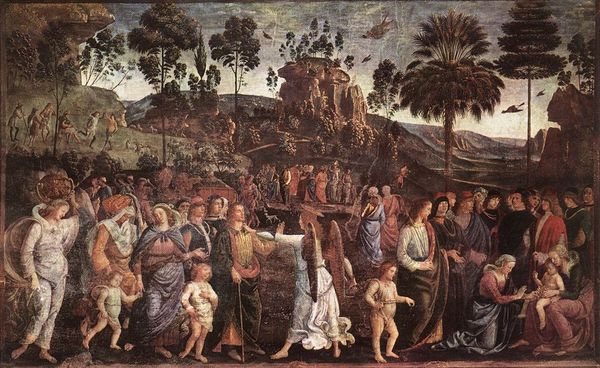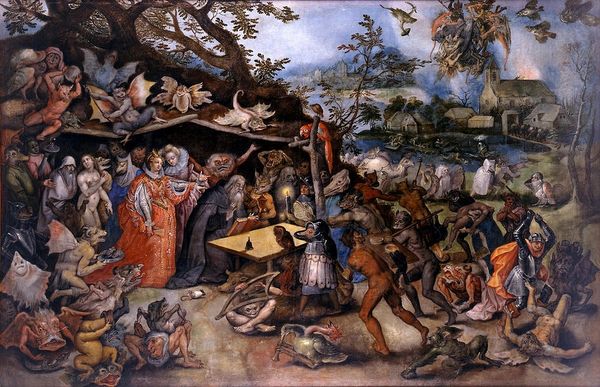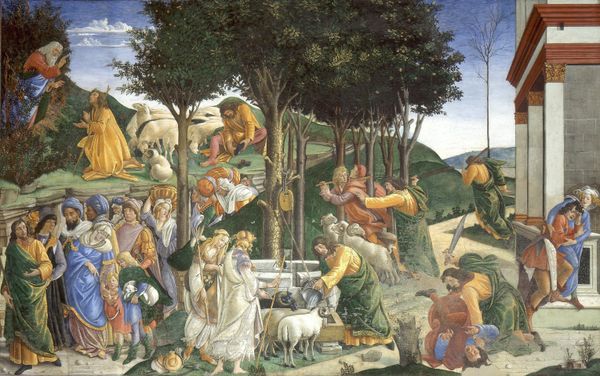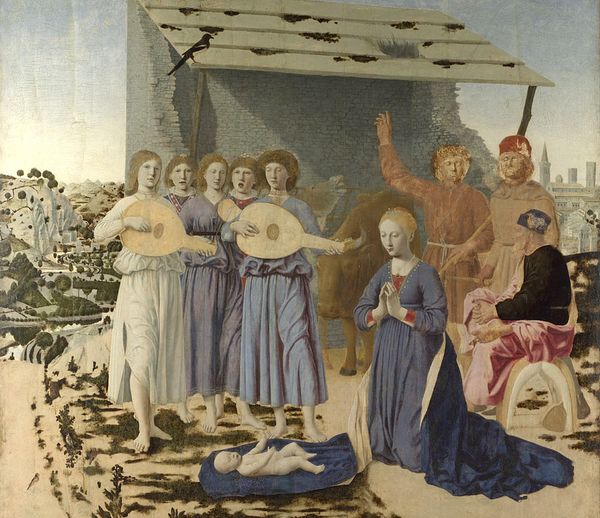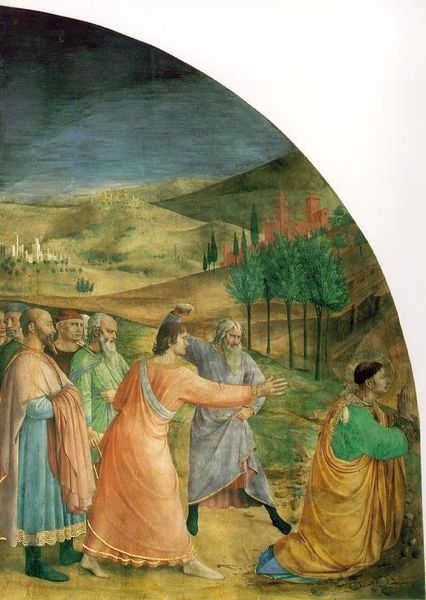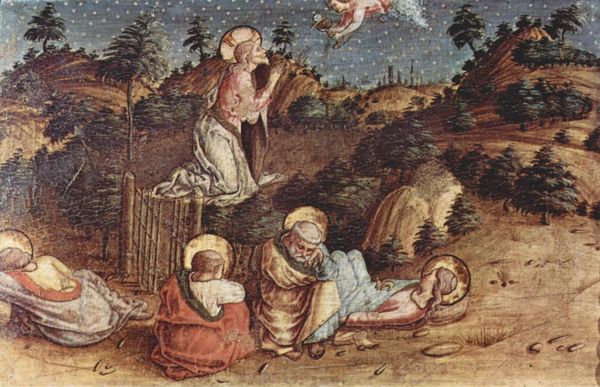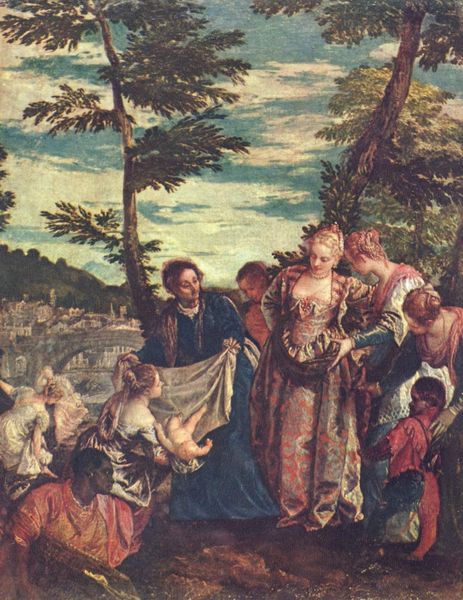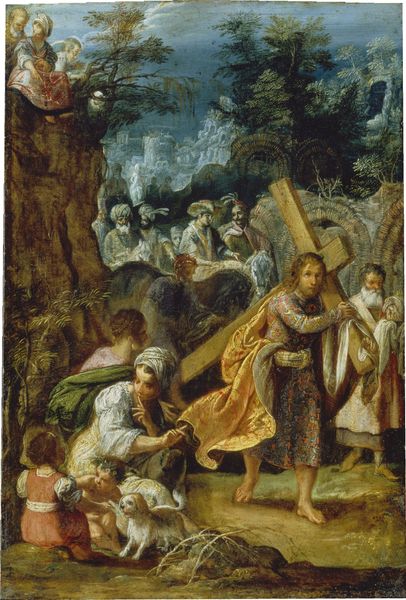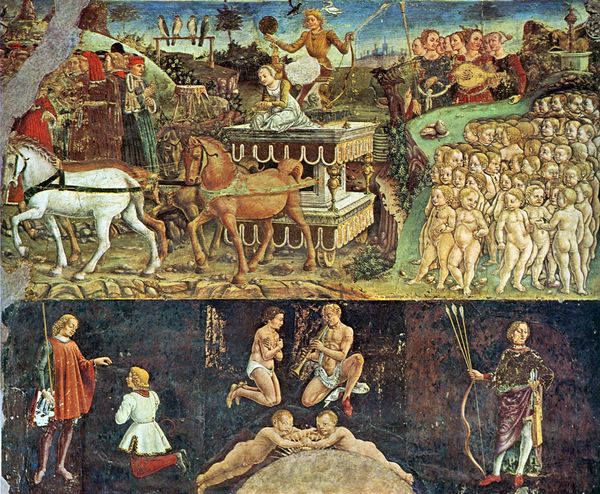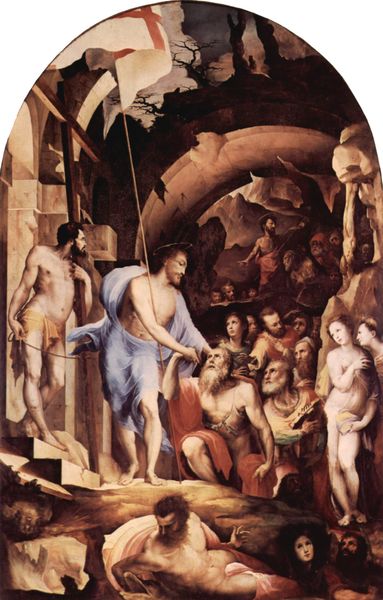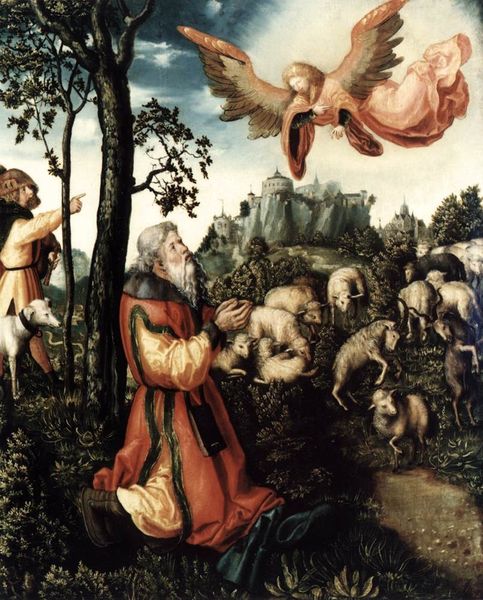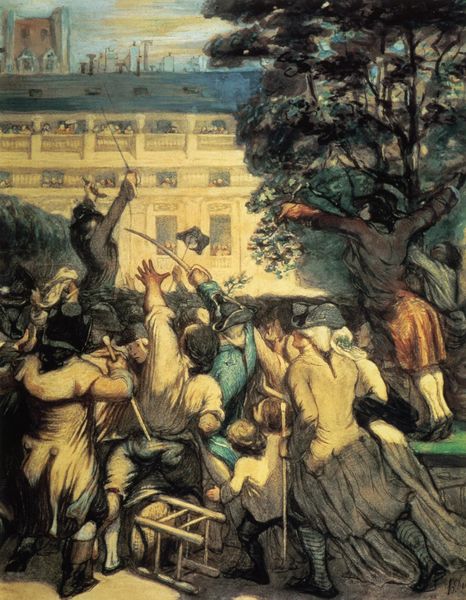
#
abstract painting
#
charcoal drawing
#
impressionist landscape
#
possibly oil pastel
#
oil painting
#
jesus-christ
#
fluid art
#
acrylic on canvas
#
underpainting
#
christianity
#
painting painterly
#
virgin-mary
#
watercolor
#
christ
Dimensions: 243 x 246 cm
Copyright: Public domain
Curator: Standing before us is Leonardo da Vinci’s “Adoration of the Magi,” which he began in 1480. Even in its unfinished state, the painting vibrates with potential. Editor: There's such a raw, almost unsettling energy here. It feels less like a serene, reverent scene and more like…a tumultuous gathering on the verge of something chaotic. Curator: Yes, and that unrest, I think, lies in the very careful placement of the figures. Da Vinci departs from the tradition of depicting the Virgin and Child in a tranquil, orderly manner. Editor: Exactly! It's disruptive. This Virgin isn’t passively receiving adoration, she’s at the absolute center of a swirl of human emotion. The chaos highlights, to me, the complexities of power. Who has it, who wants it, who challenges it. Curator: Look at how he uses light and shadow to enhance the symbolic meaning of the work. The ruin in the background contrasts sharply with the nurturing scene in the foreground. That contrast speaks to a world that needs redemption, which will come in the form of Christ. Editor: But even the figures surrounding Mary and Jesus seem to be emerging from that shadowed ruin. There are questions raised here around access to divinity; who *deserves* salvation? The ruin, for me, complicates simplistic notions of good and evil. Curator: Note too, how da Vinci deliberately uses specific poses and gestures for each magi. One kneels in reverence, offering a gift. Another seems almost contemplative, observing the scene with thoughtful distance. Editor: It's fascinating to consider, if Da Vinci had finished this work, whether he could have maintained this incredible tension. So much is communicated precisely *because* of its unfinished nature; we're invited to actively participate in filling in the gaps. It makes the whole experience a more engaging, dare I say democratic one? Curator: A democratic space for the contemplation of meaning...a concept Da Vinci would have been deeply sympathetic to, I imagine. I see symbols of transformation and societal hope. Editor: And I see how, centuries later, that transformative power continues to resonate and provoke vital, uneasy questions.
Comments
No comments
Be the first to comment and join the conversation on the ultimate creative platform.
